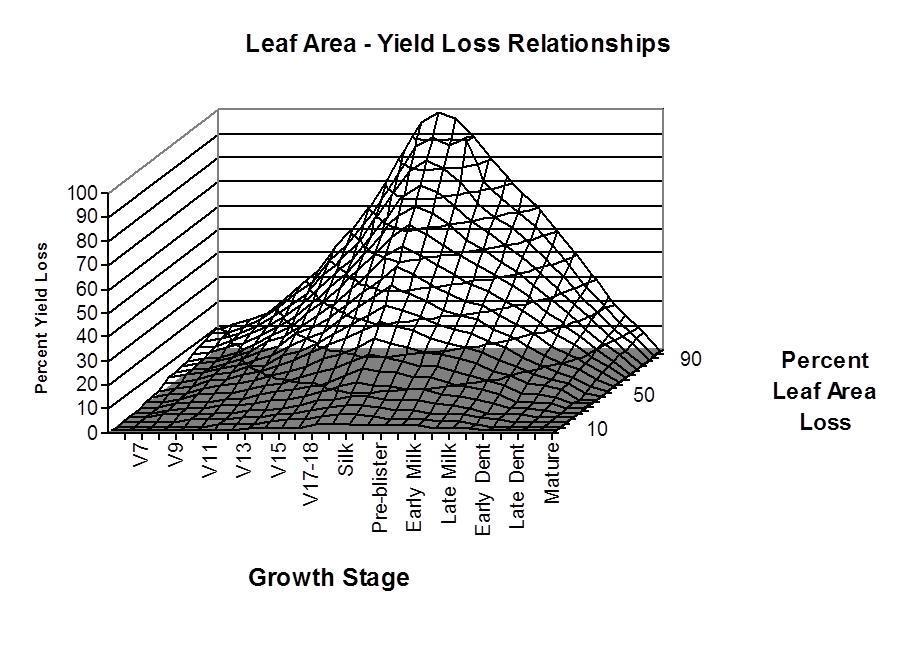Hail
Assessing hail damage on corn
Hail storms are common in Kansas this time of year, causing damage to both maturing wheat and young stands of corn. Wheat injury is relatively easy to diagnose, but assessing injury to young corn plants is more difficult.
Hail damage always makes corn look bad and can make for some sleepless nights. But, while the physical damage is apparent, the actual effect on yield is not as obvious, according to Kraig Roozeboom, Crop Production and Cropping Systems Specialist. Potential corn yield losses from hail gradually increase as the crop gets more mature, up to the silk stage, when peak yield loss occurs. After silking, yield losses from hail damage normally decline again.
Why is that? There are several reasons, all based on growth and development of the corn plant.
Emergence until stem elongation (VE to V5)
Up through the 5-leaf stage of growth, the growing point of corn is below the soil surface. At the worse, hail damage would remove all five leaves, but typically not damage the growing point. A corn plant has up to 24 to 26 leaves at tasseling. If the plant loses five of these leaves early on, it will still have the potential to have 19 to 21 leaves at tasseling. Yield will be reduced, but by much less than one might expect from the appearance of the plant.
If temperatures are cool and the corn does not continue growing rapidly after a hail event, secondary rots can infest the damaged tissue and eventually kill the growing point, even though it may have survived the initial hail storm. You should be able to see if the corn is continuing to grow within a few days.
Stem elongation to tassel (V6 to VT)
The growing point begins extending above ground by the 6-leaf stage, although it is still protected by several layers of leaves and sheaths. The number of rows that will be in the ear is established by the 12-leaf stage. Stress during V8 to V11 can reduce row number. The number of kernels per row is not determined until about V17, just before tasseling. Hail damage and loss of leaf area during these stages of growth can cause increasing potential for yield loss. Hail can also cause stalk bruising during these stages of growth, but it is hard to determine the amount of damage from stalk bruising until later in the season.
Tassel to maturity (VT to R6)
At VT to R1 (tassel to silk), the corn plant is more vulnerable to hail damage than at any other stage. The tassel and all leaves are exposed at that time. No more leaves will be developed, and the corn cannot replace a damaged tassel. Furthermore, the stalk is exposed, with only one layer of leaft sheath protecting it. Unlike wheat, corn cannot fill from the stem if leaves are lost at this stage of growth. The six to eight leaves above the ear are the most important and provide most of the grain fill.
The four week period centered around silking is critical to corn, and not only in regard to hail damage. Drought stress, excessive moisture, extreme heat, diseases, and even high winds can all stress the plant at this critical stage of growth and reduce yields. Early in this period, stress can reduce kernel numbers by limiting potential ear size. Stress right at silking can reduce the number of kernels fertilized. Stress just after silking can cause fertilized kernels to abort.

Graphic illustrating the relationship between estimated yield loss and percent leaf area loss at different growth stages of corn (based on data from Corn Loss Adjustment Standards Handbook, USDA-FCIC-25080, pp.7-98).